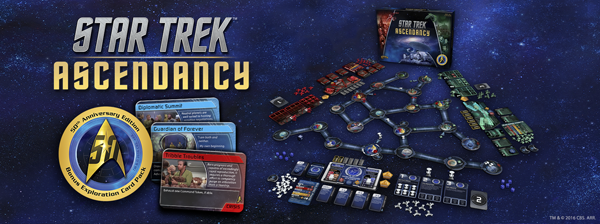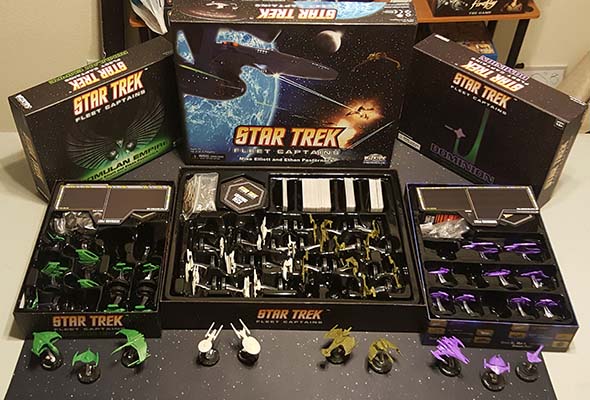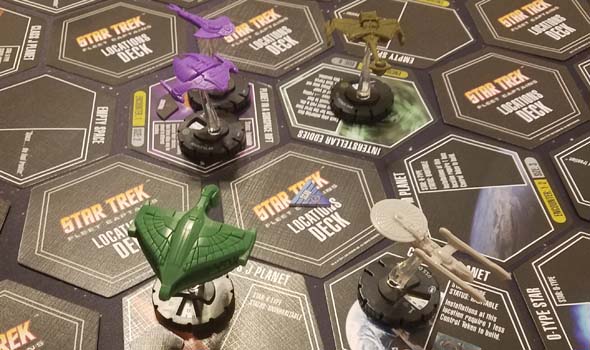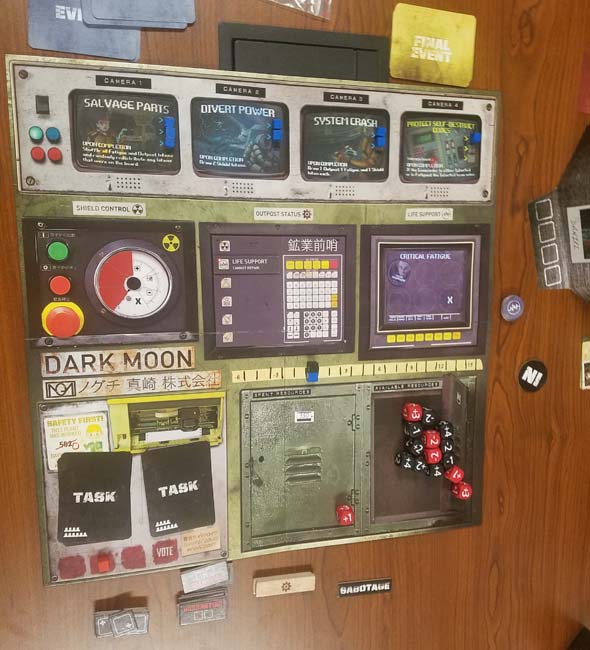
I missed yet another theatrical sci-fi movie. The trailers for Annihilation made the movie look like kind of a dumb monster flick, so I didn't rush out to go see it. I only started to hear several weeks later that it might actually be a pretty good sci-fi film. Unfortunately, life happened, my weekends were busy, and I never made it out to the cinema to see it.
So instead, I was invited to see a new horror movie with some friends. A Quiet Place is also a monster flick, but its novel gimmick really helps to set it apart from other monster movies. The gimmick itself isn't even particularly original. Other movies have featured monsters that are especially sensitive to sound. It's the execution of A Quiet Place that sets it apart.
Much like last year's exceptional War for the Planet of the Apes, A Quiet Place's dialogue comes mostly in the form of subtitled sign language, which the family of protagonists already knows because the oldest child (Millicent Simmonds) is deaf. This leads to the movie being palpably quiet for most of its runtime. I say "most" because there's a few moments of punctuated loudness that work effectively. There's also quite a few moments in which artificially-loud noises, sound effects, and musical ques are used to create cheap jump scares.
That last bit was disappointing because when A Quiet Place is cleverly using its sound design to ratchet up tension, it works phenomenally. This comes through most clearly with the deaf daughter. The movie goes almost completely silent whenever it switches to her point of view, with a faint, high-pitched static being the only sound you'll hear. When this is combined with some depth of field effects that make it hard to see clearly what's going on, it really helps to sell the sense of powerlessness and lack of awareness of the character, which ratchets up the tension for the audience.
The daughter is deaf, so the family already knows sign language, and use it throughout the movie.
The diagetic loud noises, such as the toy space shuttle or knocking over the lamp at the beginning of the movie work really well to punctuate the silence and create momentary panic. It's when lazy, cliche horror movie sounds start to come into play that things start to feel cheap. I'm not sure whether to blame this on actor/director John Krasinski, or on producer Michael Bay. I lean towards the latter. It doesn't ruin the movie, but it does weaken it a little... [More]
6e6f5b63-528b-4196-9fa8-e2ebcbf10833|0|.0
Tags:A Quiet Place, horror, science fiction, monster, sound, sign language, silence, deaf, hearing aid, baby, children, family, pregnancy, religion, Michael Bay, John Krasinski, Millicent Simmonds, Noah Jupe

As I had mentioned in my Star Trek: Fleet Captains review, good Star Trek games are few and far between. Perhaps my favorite Trek game of all time is the Windows '98 4-x strategy game Birth of the Federation. BotF, developed my Microprose, was basically a Trek reskin of Master of Orion II. It was buggy, had cheating A.I., suffered from a major memory leak that slowed the game to a crawl after about 100 turns of play, and it didn't include any Original Series ships or technologies. But it did manage to faithfully capture Star Trek's spirit of exploration and discovery by being a game about exploring and colonizing a galaxy.
It wasn't a stripped-down startship combat simulator (Starfleet Command), or a cookie-cutter first-person shooter (Elite Force), or a lazy StarCraft clone (Armada), or an out-of-place dogfighter (Invasion), or a derivative WoW clone (Star Trek: Online). None of those games is terrible. I've played them all, and actually have some rather fond memories with most of them. But none of these games really meshed perfectly with the Star Trek license, and none of them really scratched my Star Trek gaming itch the way that Birth of the Federation did. Apparently, some designers at Gale Force Nine also like Birth of the Federation, because their new board game, Star Trek: Ascendancy, almost feels like a board game version of that classic Trek PC game.
Ascendancy is the first proper 4-x board game using the Star Trek license that I've seen. It certainly blows Fleet Captains out of the water. While Fleet Captains included some token exploration and territory-expansion mechanics as a supplement to the ship-to-ship combat that was the core of the game, Ascendancy is a game that is actually about exploring a procedurally-generated map, colonizing planets, and developing their resources. You can win by conquering other players' home worlds, or by developing your culture up to a specific level.
The final frontier is always in flux
The board of Star Trek: Ascendancy utilizes an interesting and novel modular board. Disk tiles represent planets, systems, and anomalies, each of which is connected by star lanes of varying distances. New systems and star lanes are drawn from a deck as the players explore, and so the board is constantly expanding as you play. It's nothing earth-shatteringly new, but it does have one neat gimmick that I haven't seen in other similar games.
The map will grow and change as the game progresses.
In addition to the board dynamically growing as the game progresses, systems are considered to be "floating" until they become locked in place by being connected to two or more systems via a star lane. This means that leaf systems can be freely rotated around to make room for other tiles to be placed in the play area. I believe this is intended to model the 3-dimensional nature of space. In a more practical sense, it means that the galaxy [map] can (and will) change its shape occasionally, leaving the true distances between locations ambiguous until everything gets locked down. [More]
7b9b6ce0-3004-4c0d-a534-30ff155f91cb|1|1.0
Tags:Star Trek, Star Trek Ascendancy, Gale Force Nine, board game, strategy, 4x, dice, Federation, Romulan, Klingon, exploration, phenomenon, trade, colonization, war, star lane, warp, warp drive, Aaron Dill, John Kovaleski, Sean Sweigart, Star Trek: Birth of the Federation

Star Trek: Fleet Captains has expansions for the Romulan Empire and Dominion.
Even though it is a kind of mediocre game, my friends and I liked Star Trek: Fleet Captains enough that we were excited to try out the game's expansions. There's a nice, episodic feel to the game that does do a pretty good job of capturing some of the feel of the source material. Fleet Captains has two expansions, which each offer a new playable faction: the Romulan Empire and the Dominion. Both expansions revolve around the same two core mechanics (espionage and saboteurs), but each has its own unique methods and techniques for how they utilize those mechanics. Since both expansions have similar features, I'm going to review both expansions together.
The Romulan Empire connives its way to victory
The Romulans are my favorite race in Star Trek I like Romulan makeup. I like their uniforms. I like their ship designs (especially the warbirds). I like their cunning. And I like the depictions of the Romulans in every era of Star Trek, except for Star Trek: Nemesis and Star Trek: Enterprise, which both managed to ruin a good thing. So opening the Fleet Captains box to find no Romulan ships was - of course - disappointing, and the very first thought that popped into my mind (after "Ooh, plastic space ships!") was "I should check if there's a Romulan expansion to this game". Sadly, it was sold out on Amazon, and eBay sellers wanted upwards of $150 for copies. I didn't want a Romulan expansion that badly... But my girlfriend, being awesome as she is, eventually saw the expansion come back in stock on Amazon and immediately ordered a copy for me to surprise me. So as I was getting ready to organize some game sessions to play the Dominion expansion and resigning myself to the idea that I'd never play the Romulans, a shiny, shrink-wrapped copy of the expansion literally showed up at my door step. She's a keeper!

I don't like the monochrome ships, but at least the Romulan ships are the same color as in the show.
The green plastic of the Romulan ship miniatures fits well with the color schemes of Romulan ships in the shows, and the miniatures don't look as dull as the unpainted miniatures in the base game. The only Romulan ships that wouldn't be green would be Original Series Birds of Prey (or borrowed Klingon battle cruisers), which aren't included in the expansion's ship roster anyway. Instead, they included three Birds of Prey from Enterprise. That's a shame to me, since I really like the Original Series Bird of Prey's design - not as much as I like the TNG Warbird design, but the TOS Bird of Prey is up there in my list of favorite ships. I really would have liked to have seen one of the Enterprise Birds of Prey replaced with a TOS Bird of Prey in the roster, and maybe even a borrowed Klingon Battle Cruiser, but no such luck. Ah well... [More]
62e7d974-a66f-4dc9-8815-e176dc78759e|2|3.0
Tags:Star Trek: Fleet Captains: Romulan Empire, Star Trek: Fleet Captains: Dominion, Star Trek, Star Trek: Fleet Captains, board game, expansion, WizKids, Romulan, Dominion, Cardassian, Vorta, Jem Hadar, changling, shapeshifter, espionage, cloak, sabotage, defect, manufacturer defect, customer support, Star Trek: Enterprise, Mike Elliot, Ethan Pasternack
Almost a decade ago, my love of board-gaming was kick-started by a single game. That game was Fantasy Flight's Battlestar Galactica board game. For a period of a couple years, my friends and I were playing that game once or twice almost every month. Even after we started branching out to other games, BSG would regularly grace our tables.
The Battlestar Galactica board game kick-started my tabletop hobby.
Unfortunately, as time went on, members of the regular group(s) that I played with got new jobs, moved, started families, and it became harder and harder to get a large enough group together to play a 4 or 5-hour long board game. Eventually, BSG (along with all my other games) started collecting dust on a shelf.
It wasn't until a few years ago that I finally got back into having semi-regular board game sessions, thanks primarily to my girlfriend taking an interest in X-Wing. Most of our board gaming in the past years has been dominated by either quick group games (such as Dominion, One Night Ultimate Werewolf, Resistance, or Cards Against Humanity), or smaller, two-player games (like the aforementioned X-Wing). No one game has dominated in quite the same way that BSG did. I'd like to play it again, and maybe someday I'll even put up a review of it, but we haven't dusted the ol' game off because we rarely have the time for it. When we do have a whole evening cleared for an epic game, we try to play other games that we haven't already played the hell out of.
Well, clearly, I wasn't the only one who loved Battlestar Galactica, but wished it didn't take so bloody long to play, because Evan Derrick's 2011 game Dark Moon is basically a reskin of Battlestar Galactica that only takes an hour and a half to play. Dark Moon accomplishes this by reducing a lot of the mechanical complexity and by making progress in the game a lot more straight-forward. Virtually every mechanic or interaction in Dark Moon is a direct analog to a mechanic or interaction in BSG.
The shape-shifting space monster among us
The core conceit of Dark Moon (and Battlestar Galactica) is that the game is a semi-cooperative game in which most of the players are working together to try to prevent their moon-based mining station from falling apart around them. However, one or more of the players is secretly a shape-shifting alien (an "infected") who is trying to sabotage the station and kill all humans. Players take turns performing a single action to try to stabilize the deteriorating mining station. However, the most efficient action is to "issue an order" to another player to allow that player to take multiple actions. The catch is that the player you give the order to may secretly be a saboteur, so you have to be careful about only giving orders to other players who you trust.

Players cooperate to complete a series of events, but some players are secretly traitors.
At the end of each player's turn, the entire group participates in a group task. Each task card has a pass or fail condition. Passing may result in positive effects for the uninfected players, and failing may result in harmful effects. These group tasks ensure that every player gets to participate in virtually every turn, so you're never sitting around twiddling your thumbs waiting for other players to do things. Even if you weren't participating in the turn, it would still behoove you to pay close attention to what's going on, if for nothing else than to look for any tells or indications that the current player may be an Infected... [More]
|

| 12 | | | | | | | 60 | | 11 | | | | | | | 55 | | 10 | | | | | | | 50 | | 09 | | | | | | | 45 | | 08 | | | | | | | 40 | | 07 | | | | | | | 35 | | 06 | | | | | | | 30 | | 05 | | | | | | | 25 | | 04 | | | | | | | 20 | | 03 | | | | | | | 15 | | 02 | | | | | | | 10 | | 01 | | | | | | | 05 |
|